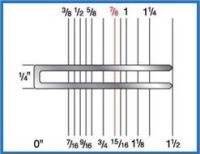Staples in underlayment construction
/May 2015
by Michael Showalter
The use of pneumatically driven staples has grown exponentially since the 1970s when compressors and nail and staple guns were introduced into the construction industry. Staples are frequently used in everything from interior cabinet box construction to application of the exterior shingles. What is frequently ignored is that staples vary in metal composition, gauge, crown width and length. The variety of staple types may seem confusing but there is no one-size-fits-all in construction.
 Recently we were asked to defend a staple manufacturer when it was alleged that their staples were withdrawing from a substrate and damaging the finished flooring. In evidence was American Plywood Association (APA) rated subflooring and underlayment with staples that appeared to be backing out.
Recently we were asked to defend a staple manufacturer when it was alleged that their staples were withdrawing from a substrate and damaging the finished flooring. In evidence was American Plywood Association (APA) rated subflooring and underlayment with staples that appeared to be backing out.
In the above referenced case, installers had used narrow crown staples to attach the APA underlayment prior to installing the finished floor. Most were apparently following the Component Panel Association (CPA) technical bulletins for Particle Board Underlayment Installation. The CPA does allow the use of staples to attach particleboard underlayment, as long as the panel subfloors are at least 19/32” thick with a minimum of 32/16 panel span rating (if not glued).
CPA dictates that “galvanized, divergent, chisel point power driven staples may be used to attach particleboard underlayment”. Staples will vary in gauge, length and crown depending upon the thickness of the underlayment. Staples are to be placed 3 inches on center around the perimeter and 6 inches on center throughout the rest of the panel.
Conversely, in the mid-1980s the APA stopped giving guidance or recommendation to use staples to attach plywood or OSB panels. The APA Engineered Wood Construction Guide gives instructions as to the selection of APA rated underlayment and the required method of fastening. Nowhere in this manual is there mention of staples. The use of staples to attach APA rated panels is not recommended nor advised.